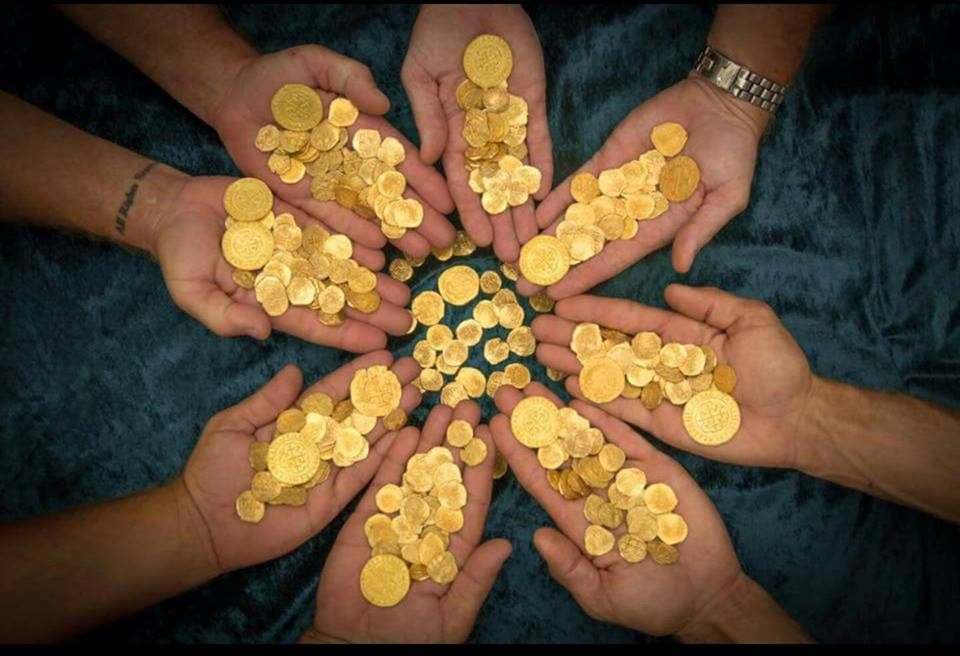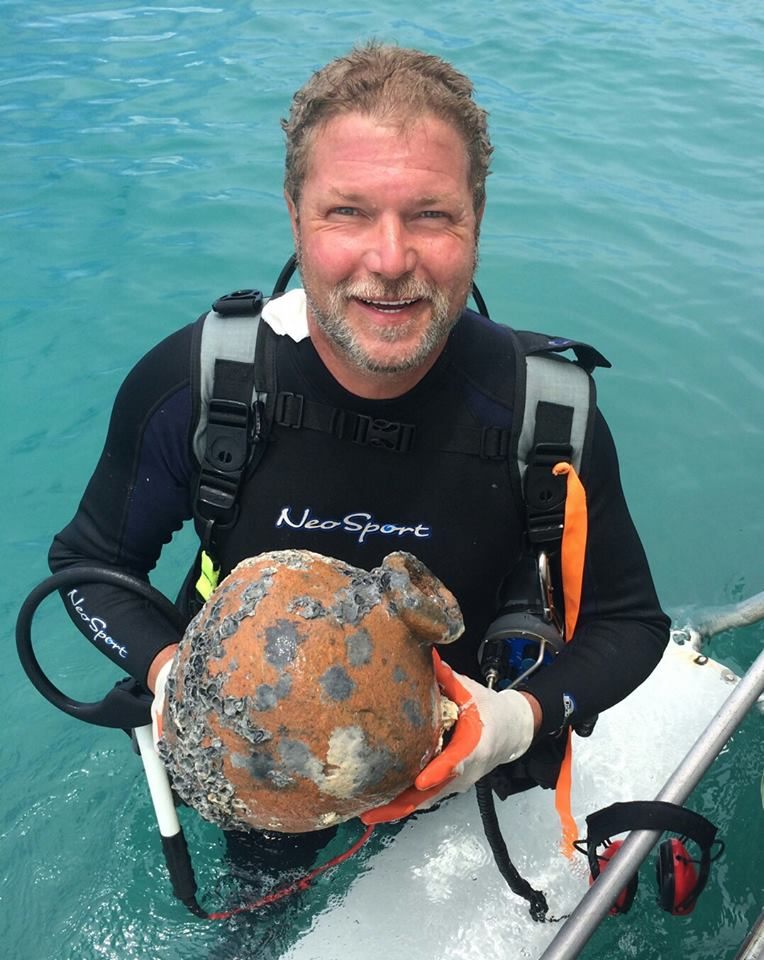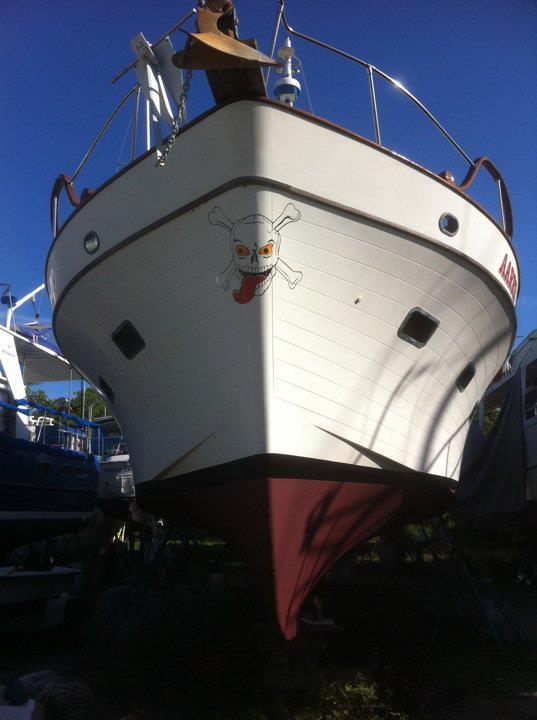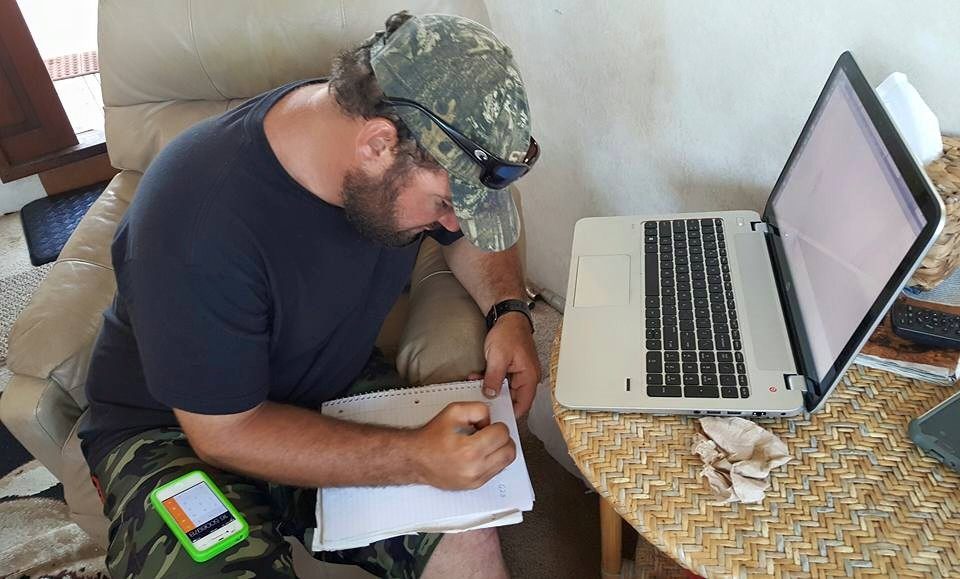When Treasure Hunting is the Family Business

Shipwreck haul. (Photo: Courtesy of Booty Salvage.)
Not everyone wants to go into the family business. The world is littered with the children of tailors or lawyers or insurance agents who want to break free. But what if your father is a treasure hunter?
This is not a hypothetical for Eric Schmitt, who grew up diving for treasure with his dad off the coast of Florida.
“He was in the right place at the right time,” says Schmitt.
The right place was Florida’s Treasure Coast, a region off the state’s Atlantic shore where a fleet of Spanish ships met their fate during a massive hurricane in 1715. Schmitt’s father, Rick, got his start during the 1960s, when the fleet was first uncovered. During those early days, divers were “bringing up a lot of treasure—tons of it”.
Eleven ships sank, dragging with them caches of gold, silver, jewelry and other artifacts to the ocean floor. Modern-day treasure hunters weren’t the first to get the idea that they should plumb the sunken vessels for riches—pirates once made their way to the crash site in search of goods. Of the eleven ships, six have been uncovered. This past July marked the 300th anniversary of the initial sinking, and it was commemorated with art shows, book signings, a historical symposium and even a Pirate Festival.

Dale with more treasure. (Photo: Courtesy of Booty Salvage.)
Schmitt found his first treasure at the age of 14.
“I was working as a diver for [my father] during the summer and I found a really unique, ornate silver platter that was made in Mexico in the late 1600s,” he says. “It had very beautiful, ornate designs on it; bumblebees and ropes and all kinds of crazy stuff.”
That platter is now on display in a museum.
Schmitt and his father started working together formally in 1999, and that version of the business lasted until 2004. By then, the dramatic Florida weather had taken its toll on the Schmitts. One of the worst hurricanes in years arrived, and their boat was wrecked in the storm. Schmitt went to college and graduated but never escaped the pull of treasure hunting. They reconvened the business in 2011 and have been doing it ever since.
And this isn’t just a father and son operation; Schmitt’s wife, mother and sister are all crew members. While Schmitt is underwater, his wife Lindsay is the “first mate,” keeping detailed GPS coordinates and other records. His younger sister spends her summer breaks from teaching fourth grade diving for treasure. A glance at the company’s Facebook page reveals what looks like an idyllic anti-office: Astonishingly blue water, puffy clouds, and grinning members of the Schmitt clan emerging from the water with everything from coins to shoe soles.

In front of the family vessel, the Arr Booty. (Photo: Courtesy Salvage Booty.)
The Schmitt’s have embraced the pirate image. Their business is called Booty Salvage and their salvage vessel is Aarr Booty. “Booty Salvage,” declares their company swag. “Leaving no bottom untouched.” The motto is accompanied by a grinning skull, tongue wagging. But that is pretty much where the pirate comparison ends. Treasure hunting is not a lark for anyone with a metal detector; Florida regulates such practices and the Schmitts have permits that allow them to excavate shipwrecks. The Schmitts are required to cooperate with archaeologists and compensate the state with up to 20 percent of their hauls, typically in objects considered historically significant.
For the Schmitts, treasure hunting high season stretches from June to August. May and September are transition months, and the sea is usually too rough the rest of the year. During high season, the Schmitt’s are on the water almost every day, working mostly a 30-mile expanse where the 1715 wrecks reside, and still offer up long sunken treasure.
“Thirty miles of ocean is pretty big, it can hide a lot of stuff,” says Schmitt.
Here is what a day might look like for a treasure hunter: Up and out by 6:30 a.m. Consult your records and set a course for the day’s chosen salvage area. Once there, drop three anchors to keep the boat stable. Then lower large aluminum tubes over the propellers. Get into your scuba gear and plunge into the water. (The wreck sites don’t look like something out of Titanic— the actual ships have long since dissolved and the ornate pottery, gold, cannon balls and other water-resistant relics have burrowed under the sand.) Use currents supplied by the boat’s propeller and forced down the aluminum tubes to “dust” the ocean floor. Once you’ve uncovered the bedrock—a grey rocky surface that Schmitt likens to the face of the moon—whip out your metal detector and pass it over the area. Strike gold (if you’re lucky). Repeat over and over and over again until the ocean grows moody and you have to take a break until next season.

At sea on the Arr Booty, the treasure hunting boat. (Photo: Courtesy of Salvage Booty)
The Schmitt’s have found remarkable things over the years, such as a delicate gold filigree box and strands of gold necklaces, but treasure hunting is slow and steady work; not every day brings an impressive haul.
But in 2015, the Schmitt’s made a truly historic discovery that earned them international media attention. They unearthed a cache of gold coins worth more than $1 million. Three hundred years ago, Schmitt explains, it was common to melt coins down and reconfigure them to stay current with the changing face of money, eliminating the old currency from circulation. Every coin found is one of the rarest in the world, he says.
“It’s all day long, you’re out in the sun, you’re rocking on boat, you’re diving all day long with a weighted belt,” he says. “We worked hard and it’s kind of like winning the Super Bowl—you put in the same amount of work every year and it finally happens.”
The Schmitts made their discovery while working under contract of Brisben-Queens Jewels LLC, the company that owns the rights to excavate the shipwrecks. The company’s owner, Brent Brisben, told Reuters shortly after the discovery that after the state took its cut, he would split the remainder of the haul with the Schmitts.

Eric studying charts and maps of the wreck site. (Photo: Courtesy of Salvage Booty.)
Schmitt says the Super Bowl of treasure finds hasn’t changed the family’s day to day work. He is still out on the water as often as weather permits. Though tiring, his dives are relatively calm. There are sharks, but the Booty Salvage team has never had trouble with one. Schmitt’s main fear is getting stung by jellyfish, a wound that causes a very annoying burning sensation. Recently, he did encounter a manatee—an animal many people love for its seemingly serene composure and teddy bear black eyes.
“Seeing a ten foot object coming at you underwater, it doesn’t matter if it’s friendly or not,” says Schmitt. “It will kind of freak you out.”
There is a small community of treasure hunters scouring the Florida waters along with the Schmitt family. It is a friendly competition; they’re more likely to hang out and talk treasure than argue over a claim like cartoon prospectors.
One occupational risk of being a professional treasure hunter is the extended conversation that follows when you reveal your job. People are pretty much always fascinated, and the question “So what do you do?” can lead to a 15 minute line of inquiry.
So what would Schmitt be doing if he weren’t a treasure hunter? It is the only question that he can’t quickly answer.
“It’s hard to think about that,” he says.











Follow us on Twitter to get the latest on the world's hidden wonders.
Like us on Facebook to get the latest on the world's hidden wonders.
Follow us on Twitter Like us on Facebook